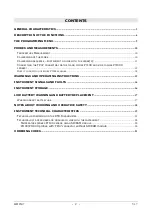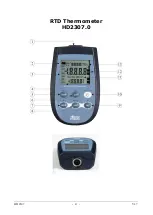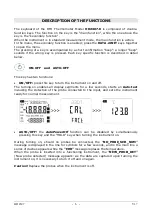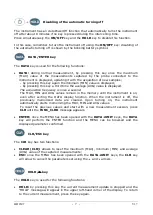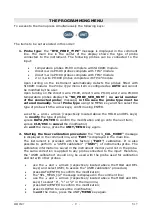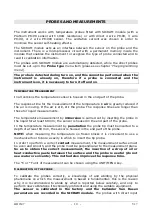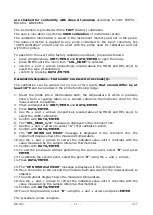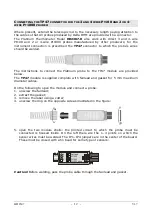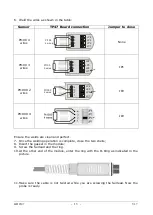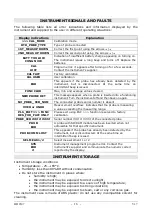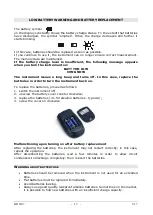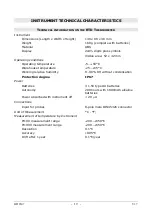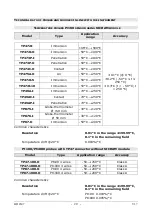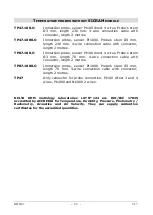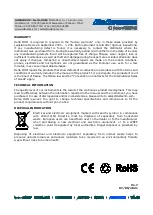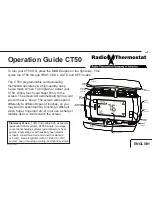
HD2307
- 10 -
V1.7
PROBES
AND
MEASUREMENTS
The instrument works with temperature probes fitted with SICRAM module (with a
Platinum Pt100 sensor with 100Ω resistance) or with direct 4 wire Pt100, 3 wire
Pt100, or 2 wire Pt1000 sensor. The excitation current was chosen in order to
minimize the sensor self-heating effects.
The SICRAM module acts as an interface between the sensor on the probe and the
instrument. There is a microprocessor circuit with a permanent memory inside the
module that enables the instrument to recognize the type of probe connected and to
read its calibration information.
The probes with SICRAM module are automatically detected, while the direct probes
must be set up in the Probe type menu item (please see chapter ‘The programming
menu’).
The probe is detected during turn on, and this cannot be performed when the
instrument is already on, therefore if a probe is connected and the
instrument is on, it is necessary to turn it off and on.
T
EMPERATURE
M
EASUREMENT
In all versions the temperature sensor is housed in the end part of the probe.
The response time for the measurement of the temperature in air is greatly reduced if
the air is moving. If the air is still, stir the probe. The response times are longer than
those for liquid measurements.
The temperature measurement by immersion is carried out by inserting the probe in
the liquid for at least 60 mm; the sensor is housed in the end part of the probe.
In the temperature measurement by penetration the probe tip must be inserted to a
depth of at least 60 mm, the sensor is housed in the end part of the probe.
NOTE: when measuring the temperature on frozen blocks it is convenient to use a
mechanical tool to bore a cavity in which to insert the tip probe.
In order to perform a correct contact measurement, the measurement surface must
be even and smooth, and the probe must be perpendicular to the measurement plane.
So as to obtain the correct measurement, the insertion of a drop of oil or
heat-conductive paste between the surface and the probe is useful (do not
use water or solvents). This method also improves the response time.
The °C or °F unit of measurement can be chosen using the UNIT/MENU key.
C
ALIBRATION OF THE PROBE
To calibrate the probes correctly, a knowledge of and abiding by the physical
phenomena on which the measurement is based is fundamental: this is the reason
why it is recommended to abide by what is reported below carefully, and only to
perform new calibrations if technically proficient and using the suitable equipment.
The sensor is calibrated in the factory and the Callendar Van Dusen
parameters are recorded in the SICRAM module. The probes with direct input
Summary of Contents for Delta OHM HD2307.0
Page 4: ...HD2307 4 V1 7 RTD Thermometer HD2307 0 ...
Page 23: ......


